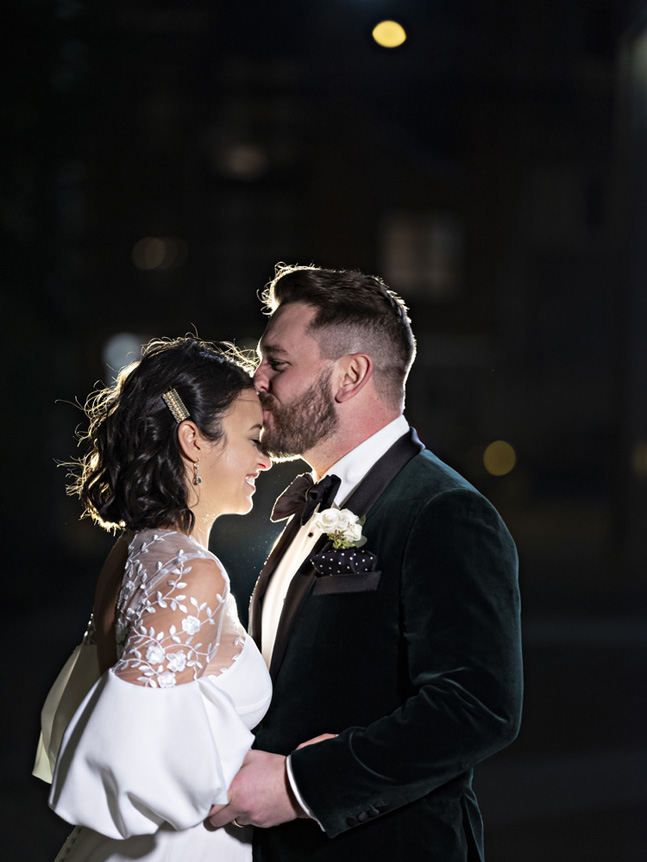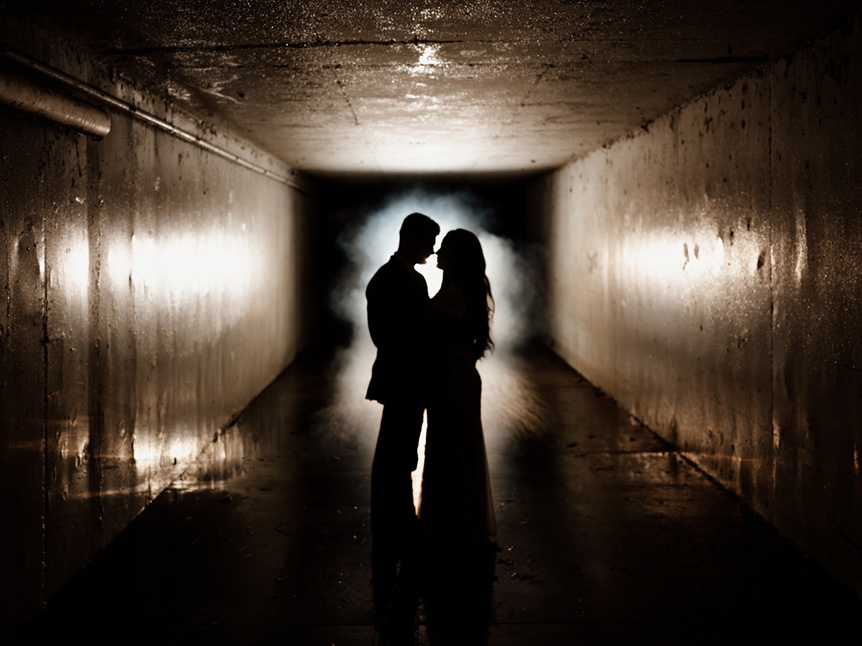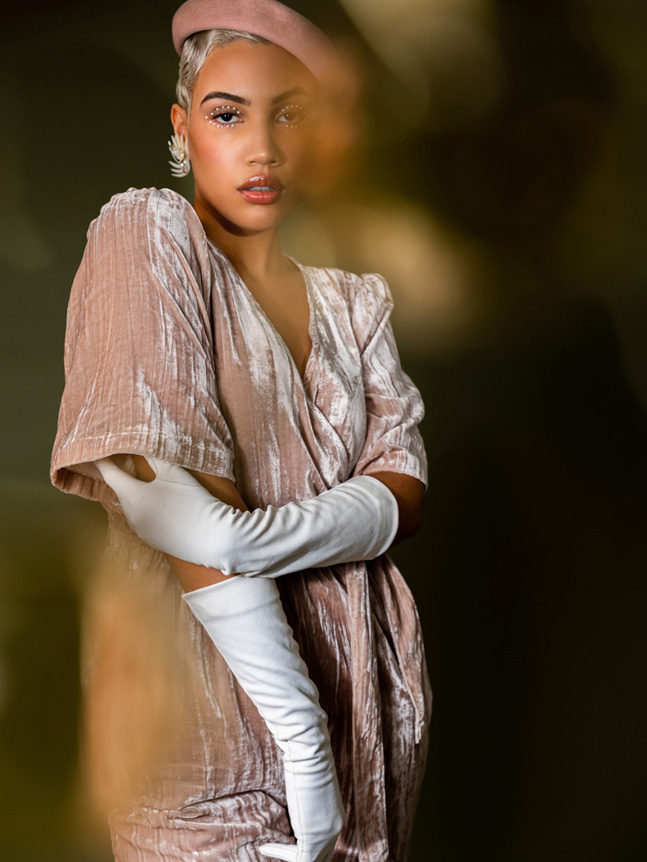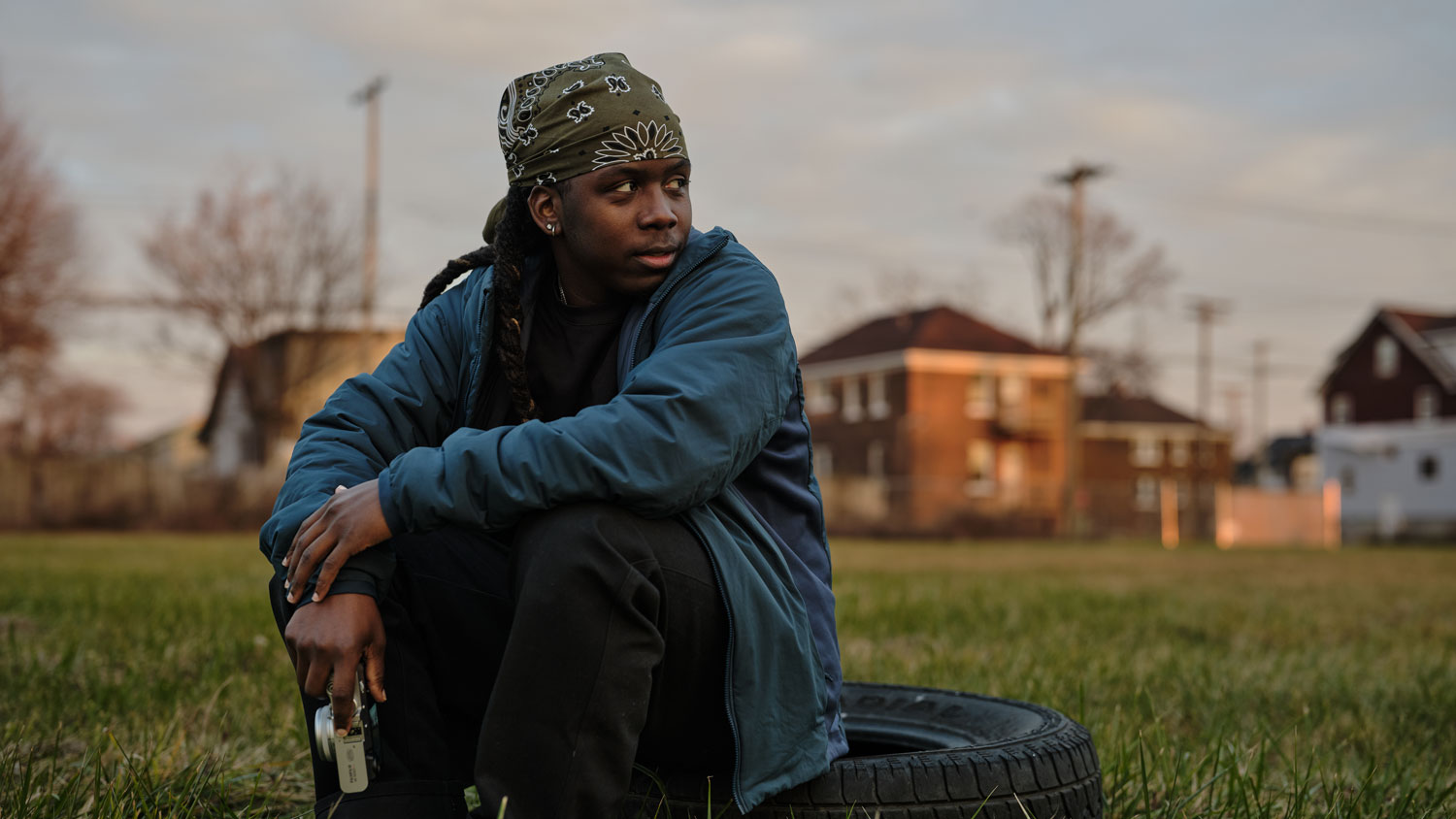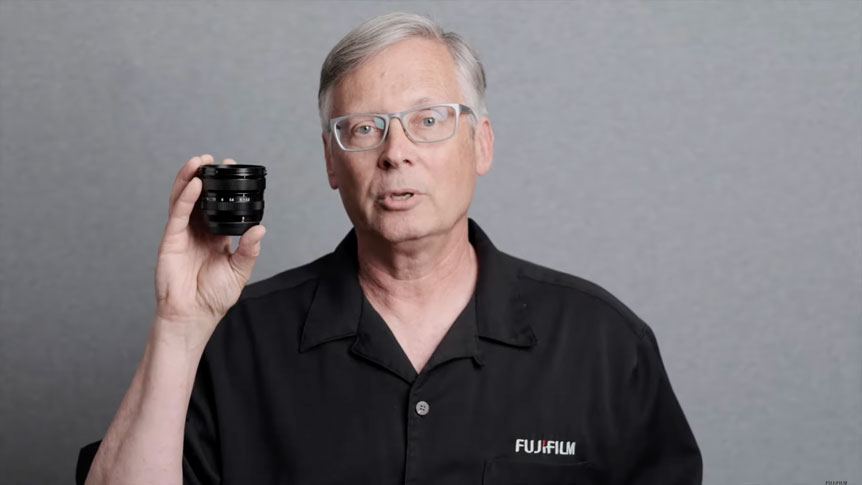
 8 minute read
8 minute read
See Your Subject in a Different Light
We catch up with some professional FUJIFILM GFX system photographers to find out how they use the Profoto A1X to create striking images
As photographers, we can all understand the importance of light, or more specifically, the importance of the right light. And that’s pretty much the problem – quite often, the available light is far from perfect. With the help of off-camera flash, it’s possible to make the light do whatever you want, giving you the freedom to create without limits.
Of course, it’s not exactly practical to schlep around a full lighting rig wherever you go just in case the perfect opportunity presents itself – but you’d be surprised how portable a pro light can be, and how much it can add to your portraits.
Discover how a selection of FUJIFILM Creators and X-Photographers have been using the super-portable Profoto A1X strobe, which has been designed specifically for the FUJIFILM GFX (and X Series) systems.
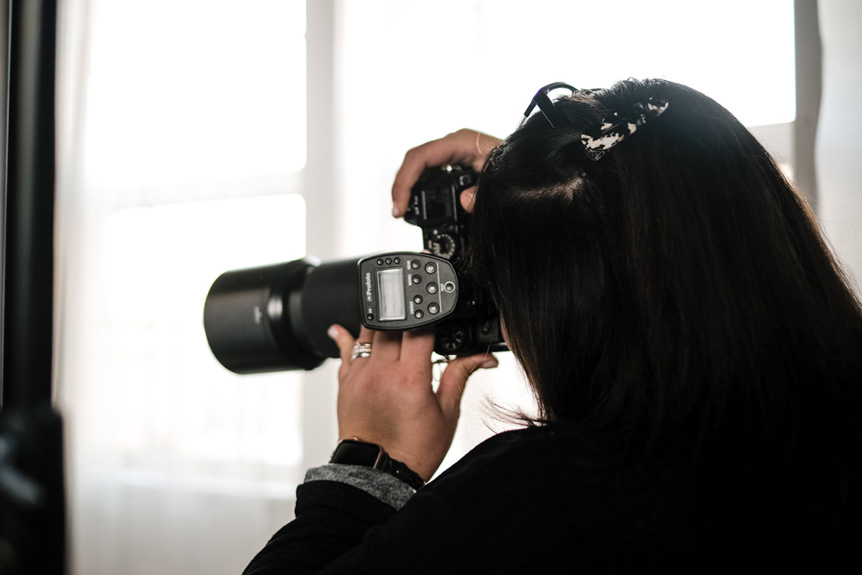
Alison Conklin
Alison Conklin spent most of her career learning how to use natural light in her photography, so she often backed away from any kind of lighting setup. However, as her photography progressed, she began to look for ways to enhance light, while maintaining a natural look. Here, she explains how she achieved that in two specific scenarios using the GFX system and the Profoto A1X.

Photo © Alison Conklin
Filling the Room
My client’s daughter has this amazing room with cherry wallpaper and a cherry bedspread. When I was scouting the home for fun places to photograph, I knew one of the pictures had to be in there. But it was a cold, overcast day in December and there was only one small window, so the available light was muddy and flat.
With the A1X, I was able to fill the room easily with soft and even light, which felt perfect for a fun children’s portrait. I put the A1X on a stand to my left and fitted it with the included dome diffuser, then pointed it at the white ceiling. Because of the dome diffuser and the light bouncing off the ceiling, there were no harsh shadows, and the even illumination meant the images felt bright and playful.

Photo © Alison Conklin
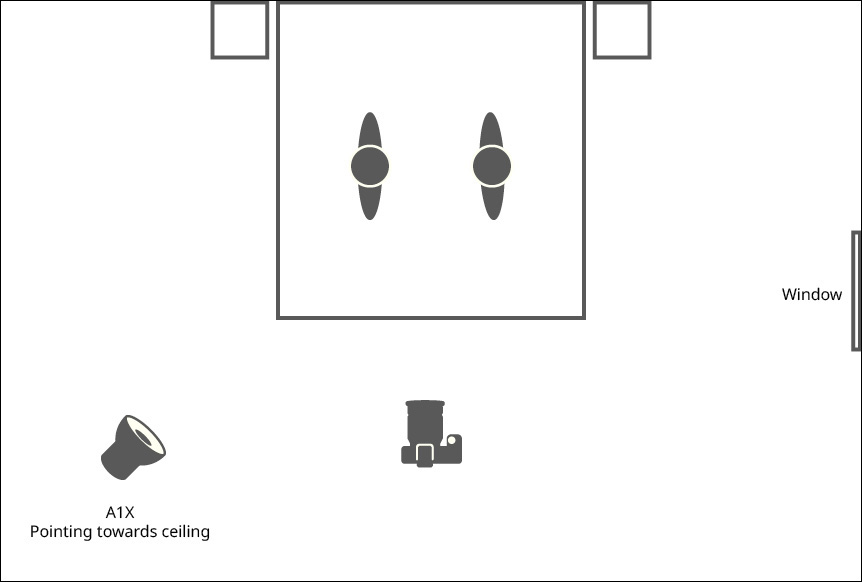
Lighting diagram
Adding Some Separation
It was New Year’s Eve and I was shooting a wedding in Philadelphia, where the sun sets before 5pm. The venue has this cool courtyard right outside that I knew we could use, so I placed the couple on the sidewalk with the city street in the background, knowing I could use a shallow depth-of-field to blur the streetlights into beautiful bokeh.
There was a floodlight on the building itself, which illuminated the couple, but I wanted to add a bit more separation with some rim lighting. I put the A1X directly behind them, pointing back towards me. I started making the image as a waist-level crop, but then stepped back when I noticed that the wind was doing amazing things with the bride’s dress. The ease of wireless photography with the GFX system and A1X allowed me to make this near-perfect scene even more dramatic and, best of all, we were all done in less than five minutes.

Lighting diagram
Chris Knight
Chris Knight discusses creating a cinematic sci-fi fantasy scene using GFX 50S, GF45mmF2.8 R WR, three A1Xs, and some homemade props. He wanted to create something that felt like a stylized composite using as many practical elements as possible. Here, he tells us about the techniques he used and offers some advice for doing the same.

Photo © Chris Knight
Embracing Color
Don’t be afraid to incorporate bold color into your scenes. Color helps influence emotion and tell the story. One of my favorite ways to use color is to incorporate color harmonies. For this series, there are two color schemes at play. First, it appears mostly triadic (red, yellow, and blue). Second, I wanted the red to dominate the images, with complements of green (seen in the tentacles). This draws a color relationship between the two elements. Finally, the monsters on the subject’s pajamas are a similar palette to the overall image.
For the below image, I used one A1X with a Profoto Clic Gel Scarlett (camera right) pointed towards the background, helping to illuminate it red. The second outside light (camera left) pointed at our subject in the door, creating a red rim light (mimicking the glow of the background) and casting his main shadow. For a bit of fill light on the inside, I chose a Clic Gel Blue to lighten the shadows with a cool tone.
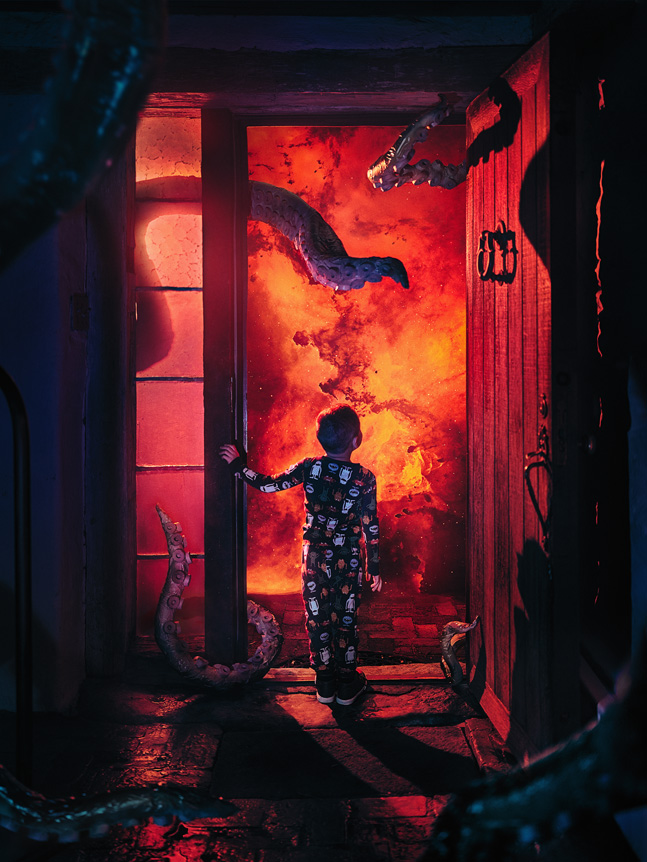
Photo © Chris Knight

Lighting diagram
Telling a Story
When creating a series, try to maintain visual cohesion. Color palettes, lighting styles, emotion, and so on, all help tell your story. Stay with the plot. If your series jumps around stylistically, it can feel like there’s no overall vision. Cohesion doesn’t need to be strict, but think through the key ingredients and how they flow through the session.
With cohesion in mind, I continued with similar lighting for the image below. This is pretty important for this series, specifically since the light and color are so distinctive. Two A1Xs, each fitted with a Clic Gel Scarlett, were set on the floor upstairs and pointed at the ceiling. They were set to a high power to create a downward glow, and the haze machine helped to make the lights ‘bloom’, or glow. For fill down low, an A1X with a Clic Gel Blue was used at a much lower power to lighten the shadows and add a cool color. The subtle uplight of the fill is a nod to ‘horror’ lighting.

Photo © Chris Knight

Lighting diagram
Miles Witt Boyer
Miles Witt Boyer has spent the past ten years learning to manipulate light and has always been fascinated by how adding the right light in subtle ways can bring out the depth in an image. For these images, he used his GFX 50R, GF110mmF2 R LM WR, GF45mmF2.8 R WR, and a single A1X to create images with moody texture and atmosphere. Here, he explains how he achieved it.
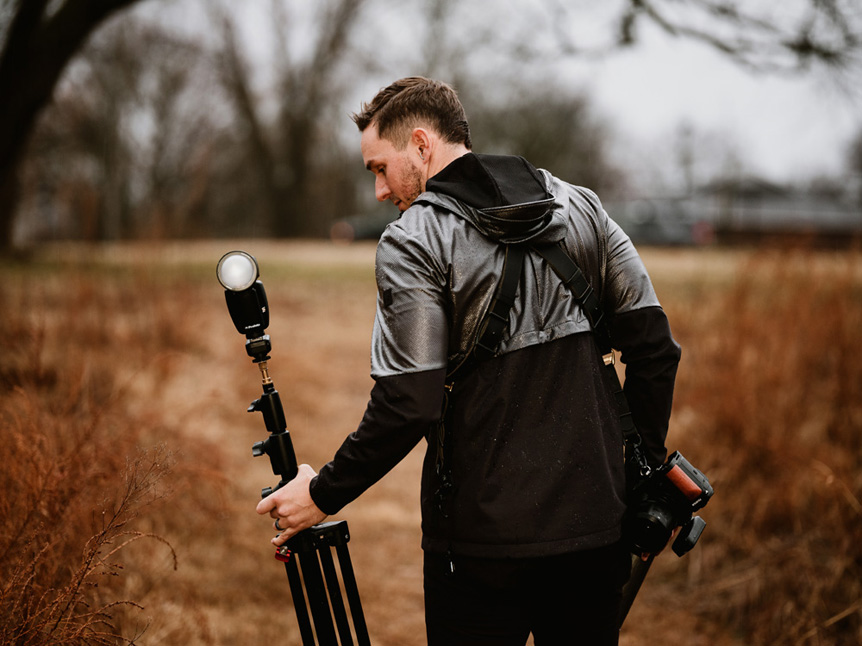
Lighting With Intent
Be intentional with the light. This means directing it exactly where you want it to go. In many of these images, I actually used a can as a homemade snoot to shape the light and stop it from spilling into the areas where I wanted focus. But you can also use the Profoto Grid Kit for A1X to get a similar effect.
Finding ways to shape and direct the light allows you to control it in ways that using a unit on its own simply can’t. I’m not trying to add light here, but instead sculpt a more fine-art approach and create shadow. Less is often more. One quality, high-output, consistent light is worth more than four clumsy, cheap ones. Just learn to be deliberate.

Photo © Miles Witt Boyer
Creating Atmosphere
Truth be told, I’m a bit shocked we didn’t end up with a police escort right out of this tunnel with the amount of smoke we created around the couple. But it’s important to learn the way light works. There’s a reason why crisp, clear, low-humidity morning air looks so different to dusty, warm, evening summer light. Anything you put between you and the light changes the way the light looks, whether that’s dust, diffusion, smoke, glass, or just pure air.
For all the images in this set, we photographed through door frames, rain, and smoke (using a water-based smoke machine) to change the way the light played and wrapped around our subjects. Additionally, learning to gel a light through atmospheric effects can give truly artistic looks to a pretty mundane place.
Kara Mercer
Finally, we hear from Kara Mercer, who has been using light to create feeling in wedding and fashion photography for years. She loves working on concepts, utilizing stunning light that is both natural looking and dramatic. In this set of images, she used GFX 50R, paired with the Profoto A1X and B10 flashes, to create a specific look. Below, she shares some advice for how you can create your own.
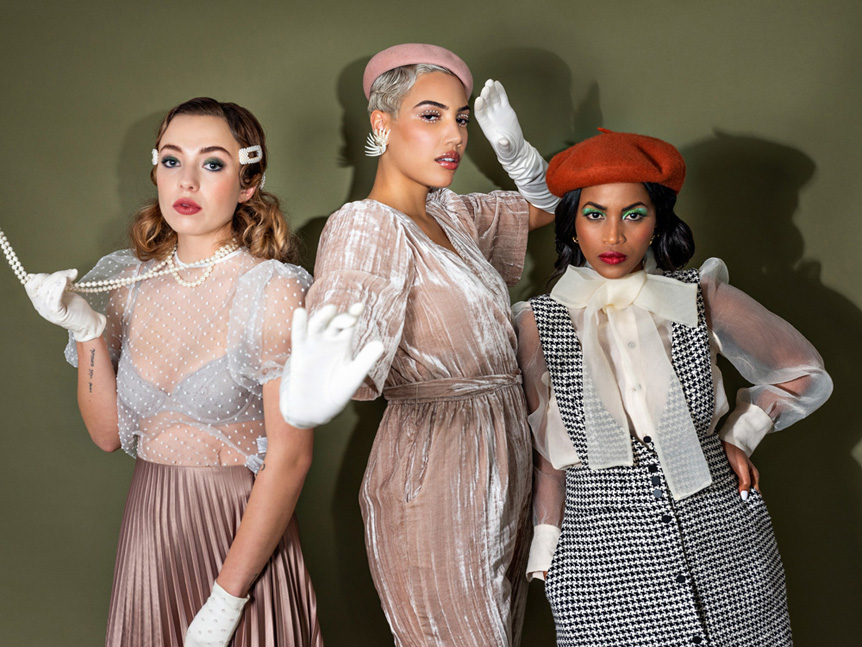
Photo © Kara Mercer
Testing Your Vision
Before showing up on set, I always have a concept or mood board on which the team has based the styling, hair, and makeup. This puts us all on the same page creatively and sets the tone for the job at hand. Testing out the lights in advance sets you up for success on the big day, too. To gain that confidence, simply set up the lights in your studio or living room and play with the power settings and chosen modifiers until you’re satisfied with the look.
If you aren’t achieving the look you want, move your lights! The number one mistake I see others make is to continue making images and just keep adjusting the lighting power, thinking that will fix the look and feel. It won’t. Instead, move the lights around, angle them down toward your subject, and keep adjusting things until you feel like it is epic!

Photo © Kara Mercer
Finding Your Style
When I started out, I used just one light. Then, I used two. Then before I knew it, I was using three or four lights during my sessions. It’s incredible the way you can completely change an image with the use of lights, gels, and modifiers, and pairing my GFX system with Profoto lights makes it easy, because syncing them is so simple.
But no matter how many lights you use, with experience and time, it’s possible to achieve your own style with flash just as you did with natural light!
Explore the FUJIFILM GFX system here or contact your nearest FUJIFILM Authorized Dealer for more information.
To learn more about the Profoto A1X, visit the Profoto website here.







